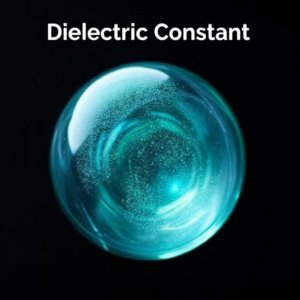Optical Rotation and Faraday Effect
Optical rotation and the Faraday effect both refer to the ability of light to change its behavior when it interacts with certain materials, and they are closely related concepts in the field of optics and electromagnetism. Let’s break them down in simple terms:

1. Optical Rotation (or Optical Activity)
What is Optical Rotation?
Optical rotation, also known as optical activity, is the phenomenon where the plane of polarization of light is rotated as it passes through certain materials, such as optically active substances. These materials are often chiral (they have a “handedness”), meaning they are not superimposable on their mirror image (just like your left and right hands).
How Does It Work?
- Polarized Light: When light passes through a special filter (like a polarizer), it becomes polarized, meaning the light waves vibrate in only one direction.
- Optically Active Substances: If this polarized light passes through a material that is optically active (like certain liquids, crystals, or gases), the plane of polarization of the light rotates.
- Right-handed or Left-handed: The amount of rotation depends on the type of substance and the direction of its chirality. Some substances rotate the plane of polarized light in a clockwise direction (right-handed), and others rotate it in a counterclockwise direction (left-handed).
Key Points:
- Chirality: The substance causing optical rotation must have a chiral structure (like sugar or certain organic compounds). This means that the substance is asymmetrical in a way that it cannot be superimposed on its mirror image.
- The amount of rotation depends on:
- The length of the path the light travels through the substance.
- The concentration of the optically active material.
- The wavelength of light used (different wavelengths might rotate the plane of polarization by different amounts).
Real-World Examples:
- Sugar: One of the most famous examples of optical activity is sugar solutions. When light passes through a solution of sugar in water, the plane of polarization rotates. This property is used in laboratories to measure the concentration of sugar in a solution.
- Chiral Pharmaceuticals: Many medicines are optically active, and their effectiveness can depend on their chirality.
2. Faraday Effect (Faraday Rotation)
What is the Faraday Effect?
The Faraday effect (or Faraday rotation) is a phenomenon where the plane of polarization of light is rotated when it passes through a material that is under the influence of a magnetic field. This rotation happens because the material interacts with both the magnetic field and the light in a specific way.
How Does It Work?
- Magnetic Field: When light travels through a material (like glass or a gas) that is placed in a magnetic field, the magnetic field affects the light, causing the plane of polarization to rotate.
- Rotation of Polarization: The rotation depends on the strength of the magnetic field, the length of the path the light travels through the material, and the properties of the material.
- Direction of Rotation: The direction in which the plane of polarization rotates depends on the direction of the magnetic field and the type of material. For example:
- If the magnetic field is applied in the direction of the light, the rotation occurs in one direction.
- If the magnetic field is applied in the opposite direction, the rotation occurs in the opposite direction.
Key Points:
- The Faraday effect is different from optical rotation because it specifically requires the presence of a magnetic field.
- It was discovered by Michael Faraday in 1845, and is a classic example of how light interacts with magnetic fields.
- The amount of rotation is proportional to the strength of the magnetic field and the distance the light travels through the material.
Real-World Applications:
- Optical Isolators: The Faraday effect is used in devices like optical isolators, which allow light to travel in only one direction, blocking any unwanted reflections or back-scattered light in lasers.
- Magnetic Field Sensing: The Faraday effect is used to measure magnetic fields in some instruments, since the amount of rotation gives a direct measurement of the magnetic field’s strength.
- Fiber Optic Communication: The Faraday effect is used in fiber optic systems to ensure the integrity of the signals being transmitted, especially in the presence of magnetic fields.
Key Differences Between Optical Rotation and the Faraday Effect
| Feature | Optical Rotation | Faraday Effect |
|---|---|---|
| Cause | Due to the chirality (handedness) of the material. | Due to the interaction of light with a magnetic field. |
| Materials Involved | Optically active substances (e.g., sugar solutions, chiral molecules). | Materials placed in a magnetic field (e.g., glass, gases, some liquids). |
| Rotation Direction | Can be clockwise (right-handed) or counterclockwise (left-handed) depending on the material. | The rotation direction depends on the direction of the magnetic field and the material. |
| External Factor | No external field required, only chirality. | Requires an external magnetic field. |
Summary
- Optical Rotation: A phenomenon where light’s plane of polarization is rotated as it passes through a chiral material. The amount of rotation depends on the material’s chirality, the path length, and the concentration of the substance.
- Faraday Effect: A phenomenon where light’s plane of polarization is rotated when it passes through a material under the influence of a magnetic field. The rotation depends on the strength of the magnetic field and the material’s properties.
Both optical rotation and the Faraday effect involve changes to the plane of polarization of light, but they are caused by different factors: one by the material’s chirality and the other by the interaction with a magnetic field.











